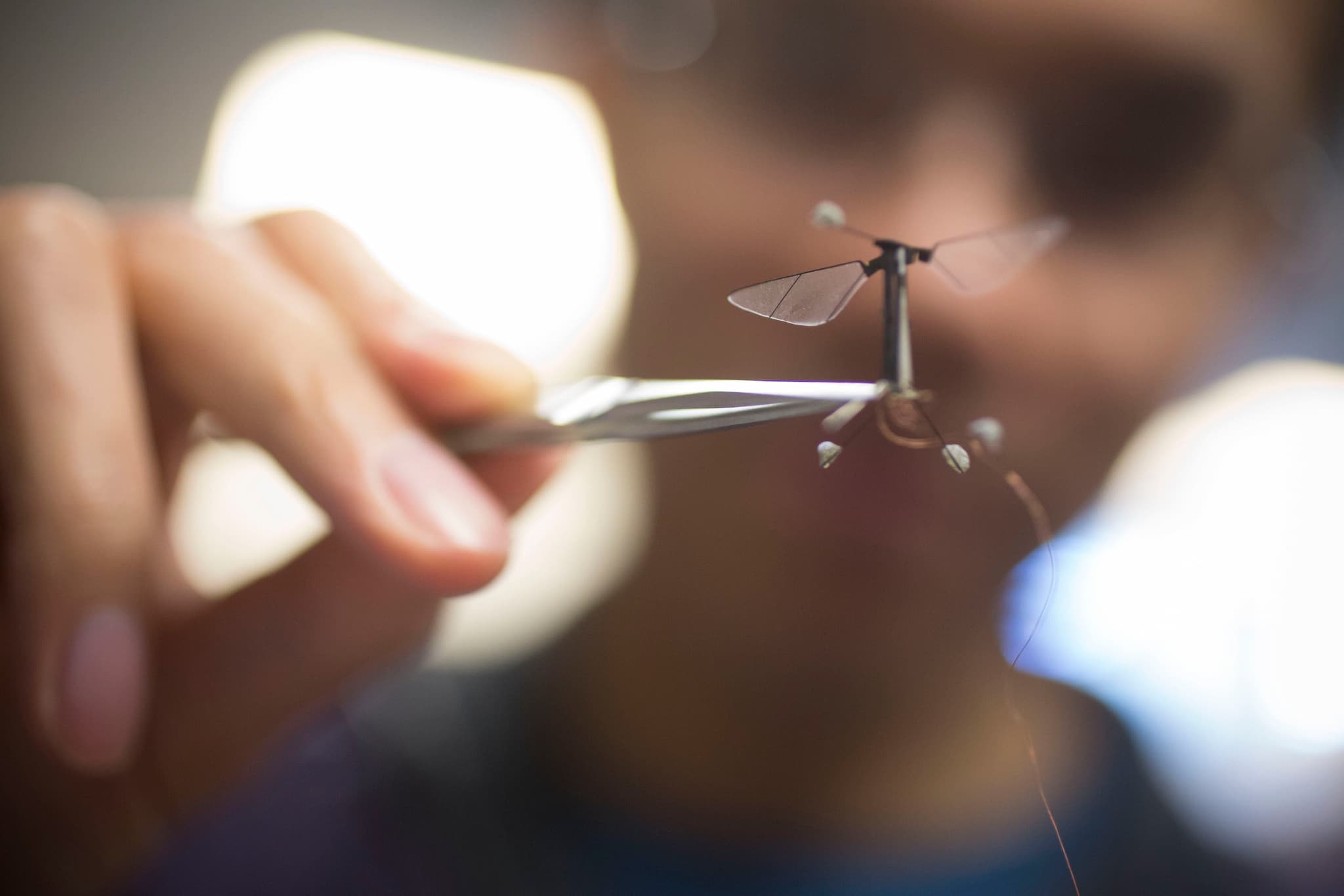Perching Little Robots
The robobee is a miniature robot the size of a penny, inspired by the biology, movement, and behavior of the insects. A device this small needs to be able to conserve energy every chance it could get. Attempts at mimicking how these insects perch on surfaces, however, proved to be far more difficult to achieve.
Recently, a collaboration of researchers from MIT and Harvard University devised a way to dramatically extend the robobees’ operational life. Using electrostatic adhesion to perch on surfaces, a robobee is able to use 1/1000 of the energy required to keep it flying at the same amount of time, considerably conserving its energy supply. The improved bee uses a small electrode patch and shock-absorbing foam mount to enable the tiny robot to latch on to surfaces upside down, like a bat. The robobee can let go of a surface simply by switching off the power supply to the electrode.
History of the Robobee Project
The Robobee Project was a mission that originally started as a proposed solution to the mysterious disappearance of honeybees observed in the early 2000’s.
A team of researchers headed by Gu-Yeon Wei, Radhika Nagpal, and Robert Wood, professors and associate professor at the Harvard School of Engineering and Applied Sciences (SEAS), posed a technological solution to the effects of this strange mass epidemic afflicting the insects.
“Not too long ago a mysterious affliction called Colony Collapse Disorder (CCD) began to wipe out honeybee hives. These bees are responsible for most commercial pollination in the U.S., and their loss provoked fears that agriculture might begin to suffer as well,” they wrote in a paper.
They recalled: “In 2009 the three of us, along with colleagues at Harvard University and Northeastern University, began to seriously consider what it would take to create a robotic bee colony. We wondered if mechanical bees could replicate not just an individual's behavior but the unique behavior that emerges out of interactions among thousands of bees.”
So the Robobee Project was created, and it has birthed a growing number of potential uses apart from autonomously pollinating crops: search and rescue such as after a calamity or disaster; hazardous environment exploration; military surveillance; high resolution weather and climate mapping; and traffic monitoring.
Share This Article
